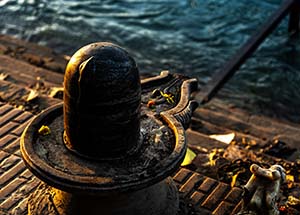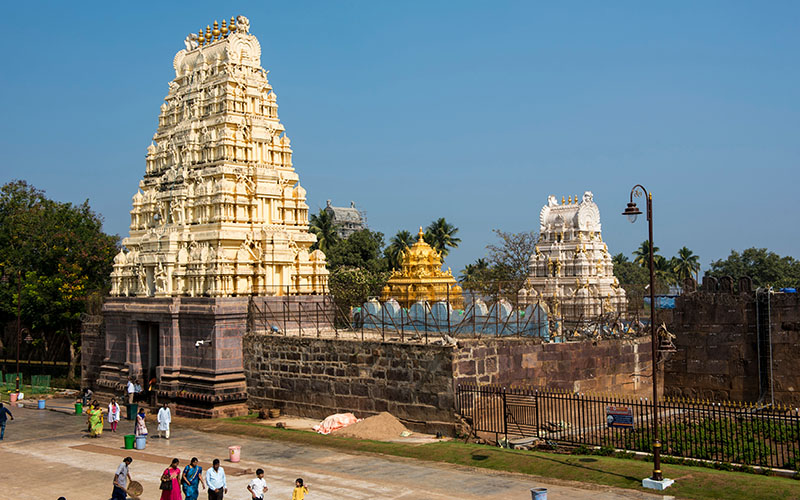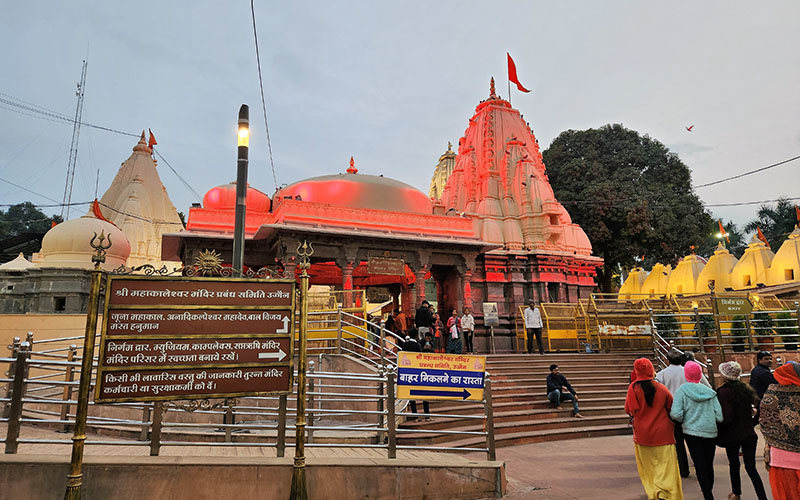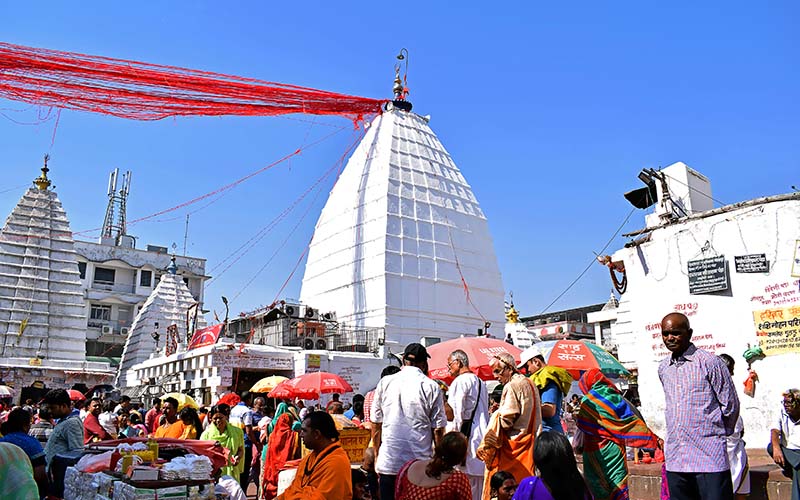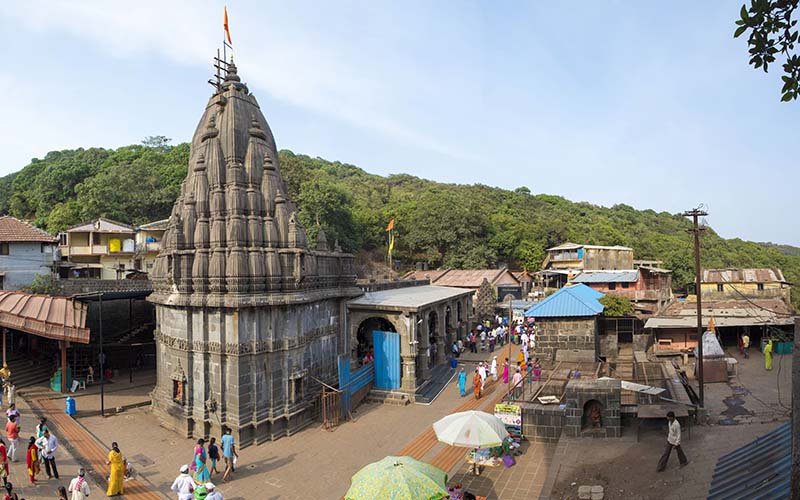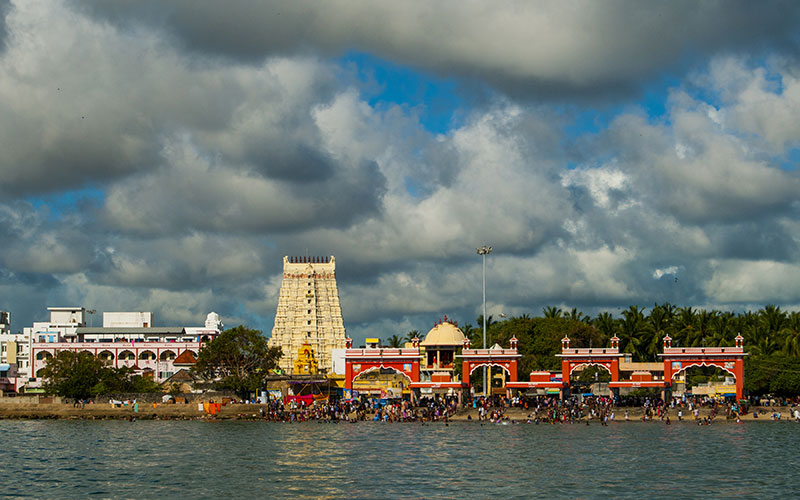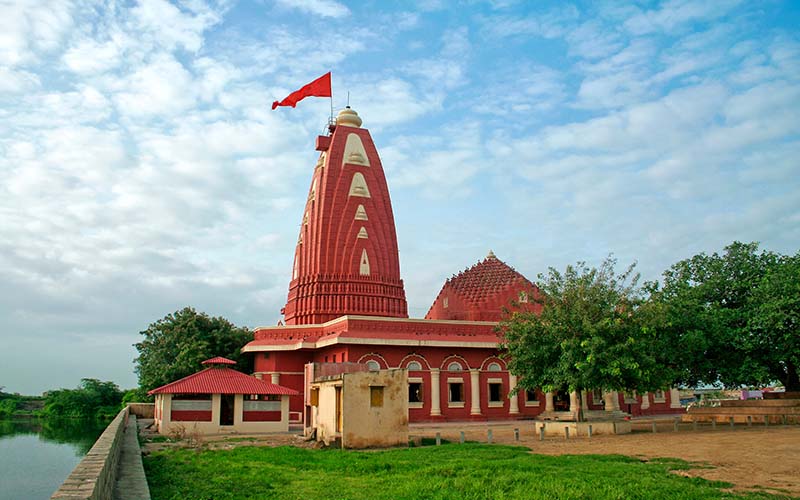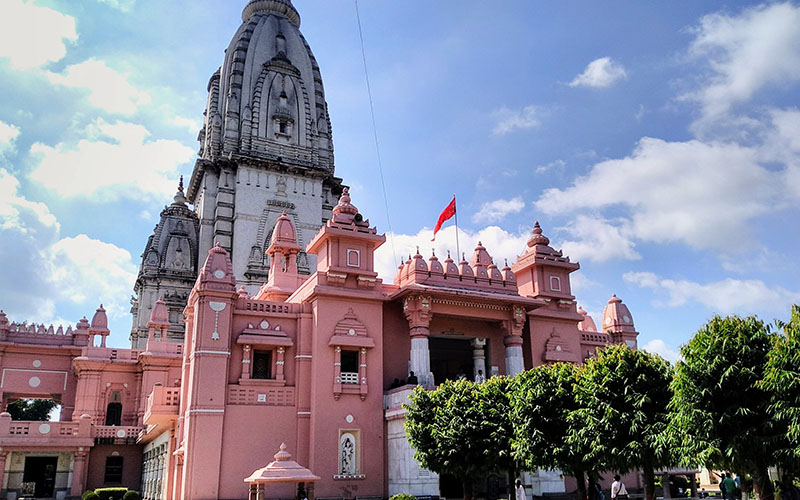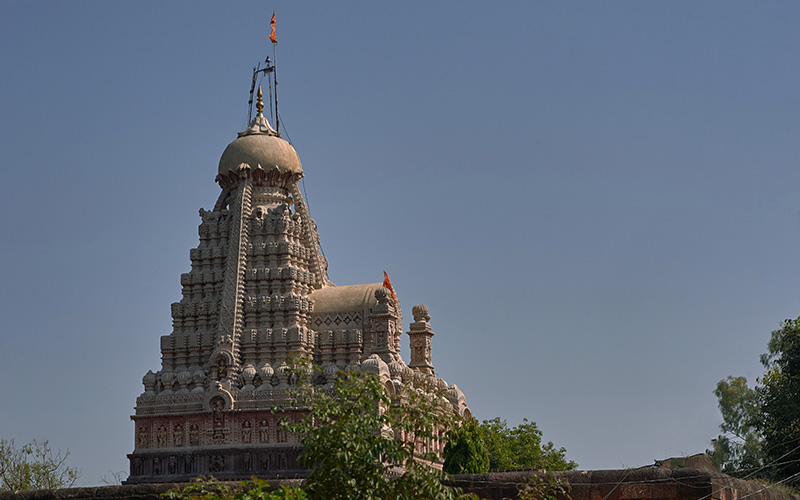From gilded sanctuaries to age-old shrines, India has a swath of temples that bathe you in holiness. Here is the guide to the
12 Jyotirlingas in India
that purify your soul and transport your mind to bliss.
Think of India, and you’ll probably think of culture and faith. There are over two million temples in India, considering Hinduism is the most practiced religion across the country. While skyscrapers are scattered like seeds in the 21st century, India built towering temples long before the world became civilized.
If you seek peace and solitude or want to check out some of the world’s oldest architecture, these 12 jyotirlingas will satiate your hungry mind.
What are Jyotirlingas?
Jyotirlinga is a Hindi term that is derived from two words: ‘lingas,’ which means symbol, and ‘Jyoti,’ which means light. It expresses Lord Shiva’s radiance, who is a powerful deity in Hinduism. Lord Shiva is the destroyer and the protector among the Tridev (the three main Gods of Hinduism). These jyotirlingas are sacred shrines dedicated to Lord Shiva and symbolize eternity. It was through these pious origins that Shiva manifested himself. The lingas emerged as an endless beam that emitted light, sanctity, and peace.
A List of 12 Jyotirlinga Names with Locations
1. Somnath Jyotirlinga in Gir, Gujarat
The first of the 12 jyotirlingas in India, Somnath Temple is an awe-inspiring shrine that dates back to 2000 years ago. Its host city Somnath is beautiful as it stands at the confluence of the ‘Triveni Sangam’ (three rivers).
How was it formed: It was first built by the Moon God (Lord Som) in the Satya Yuga to pray to Lord Shiva to get rid of the curse given by his father-in-law Daksha Prajapati, so that he could regain his luster. This stunning temple was initially made entirely out of gold. Its Baan Stambh is a completely straight line from the place of origin to Antarctica.
It is the eternal shrine, literally. It comes from a strategic past and has been restored despite numerous loots and devastations. An 11th-century traveler from Arab, Al-Biruni described Somnath gloriously in his travelogue regarding its enormous wealth — there were 300 musicians, 500 performers, and 300 barbers. Lured by the facts, Mahmud of Ghazni raided and stripped the temple of its wealth. Following this, several invaders demolished the shrine over time. Interestingly, the temple still retains its charm and elegance.
Visiting this place of worship can be a humbling yet uplifting experience.
Timing: 6:00 AM – 10:00 PM
2. Mallikarjuna Jyotirlinga in Srisailam, Andhra Pradesh
Placed in one of the hill stations in South India, Mallikarjuna Jyotirlinga is the devotional form of both Lord Shiva and His wife, Goddess Parvati. Embracing the verdant Nallamala forest, the temple courtyard is breezy and beautiful. Inspired by the Dravidian style of architecture, the temple’s tall towers and sprawling precincts allow you to sit and meditate in the open air.
How was it formed: According to the religious book Shiv Purana, Lord Karthikeya got angry and went to Kraunch Mountain when Lord Ganesha was married before him. Everyone tried convincing him, but it all went in vain. Hurt by his behavior, Shiva-Parvati went behind their son, and Lord Shiva manifested himself as a beam of light.
You can experience the power of sanctity in this jyotirlinga-cum-Shakti Peeth (one of the 18 temples dedicated to Shakti Devi). Devotees believe visiting this shrine helps one gain happiness, wealth, and fame. Also, doing Abhishek (a slow pour or stream of liquid, like water and milk) on this unique Sahara Linga provides the utmost peace to your soul.
The temple comes alive during Mahashivratri, Ugadi, and Kartheekai Mahothsavam. It is a treat for all the devotees to join the festivities, sing the hymns, and admire the decor.
The best time to visit this temple is in the winter months, from October to February.
Timing: 4:30 AM – 3:30 PM; 6:00 PM – 9:00 PM
3. Mahakaleshwar Jyotirlinga in Ujjain, Madhya Pradesh
Mahakaleshwar Temple, tucked on the banks of the Kshipra River and flanked by the mahakal jungle in Ujjain, is a must-visit place in the country for travelers who are finding the purpose of their lives. This powerful shrine is a five-story structure, including an underground floor. It is an outstanding gem of Maratha, Bhumija, and Chalukya architecture. Check out the lofty spire, the intricate details, and the eulogies written for the Lord. Here, you will find the only jyotirlinga that faces south in India, while others face east.
How was it formed: Amongst the many stories of its origin, the most popular one is about a 5-year-old boy., who was inspired by the fervor of King Chadrasena of Ujjain. He started praying and devoting himself to Lord Shiva despite the dissuasion and disturbance around him. Impressed by his unwavering worship, Lord Shiva appeared here.
This is one of the seven mukti-sthals in India that liberates you from the cycle of life and death. It is a self-manifested Linga and has incessant energy. You can partake in the famous ritual of Bhasma Aarti, an offering with ashes.
Timing: 06:00 AM to 08:00 PM
4. Omkareshwar Jyotirlinga in Khandwa, Madhya Pradesh
Another highly venerated Hindu temple in India, Omkareshwar Jyotirlinga, is located on an island shaped like ‘Om’ at the Narmada River. This is one of the rare jyotirlingas that is believed to be split between two temples: Omkareshwar (Lord of Om Sound) and Amareshwar (Lord of Immortals). It is a giant temple with a grand Sabha Mandap (meeting or prayer hall), a shrine for Parvati and Ganpati, and engraved dioramas.
How was it formed: Among the many legends, the Hindu scriptures say that once in a war between the Devas (divine beings) and Danavas (demons), the Devas lost and prayed to Lord Shiva. It was then that He appeared in the form of Omkareshwara Jyotirlinga. There is another story about the Vindhya Mountains that did extreme tapasya to Lord Shiva by creating a lingam made of sand and clay. Lord Shiva blessed him.
Timing: 5.00 AM – 3.50 PM; 4.15 AM – 9.30 PM
5. Baidyanath Jyotirlinga in Deoghar, Jharkhand
Also called Baba Dham, this is one of the popular 12 jyotirlingas in India. Its pyramid-shaped dome gleams with three gilded vessels, presented by the Maharaja of Giddhaur, Raja Puran Singh. Once you visit here, you can also bow down in 21 other temples, a few of which are devoted to Lord Brahma, Lord Hanuman, Goddess Saraswati, and Goddess Kali. You can feel the power of devotion and a sense of humility as you visit the temple of Parvati, tied to the Shiva temple with holy red threads. Other eloquent features of the jyotirlinga include a giant Nandi sitting in front of Shiva and five trident-shaped knives.
How was it formed: In Hindu scriptures, the evil King of Lanka, Ravana, performed penance to please Lord Shiva. He sacrificed his ten heads, one after another, to the Lord. Seeing this, Shiva appeared and revived him. Just like a vaidya (doctor), he joined the heads to the body. On asking to take the Linga with him to Lanka, Shiva told Ravan that he could, but on his way, if he kept the Linga anywhere on the ground, it would be established there. Ravana couldn’t carry the Linga throughout and had to place it on Earth; hence, this jyotirlinga came into existence.
Annually, millions of devotees join in the Kanwar Yatra, which is a holy proceeding to reach the sacred site of Sultanganj and collect the waters of the Ganges back to the Jyotirlinga.
Timing: 4:00 AM – 09:00 PM
6. Bhimashankar Jyotirlinga in Maharashtra
One of the most sacred abodes of Shiva, Bhimashankar, is located in the Sahyadri hills of Pune by the banks of the Bhima River. The temple was originally built in the 12th century with features that are still present, like the shikhara (tower) and garbhagriha (sanctum). While the significant architectural influence is from the Indo-Aryan style, there is also a bold impression of Gujarat and Rajasthan. The facade speaks about legendary epics like the Ramayana, Krishna Leela, Shiva Katha, and more.
How was it formed: According to Hindu scriptures, there was a war between Lord Shiva and the demon Tripurasura. It was a world-shaking tussle where the devil lost. As Lord Shiva rested post-war, the sweat from his body flew down, creating the Bhima/Chandrabhaga River.
Shivratri and Navratri are the times when the temple is immersed in the utmost spirituality, festivities, and prayers. The ten days of Navratri are celebrated with enthusiasm.
Timing: 4:30 AM – 9:30 PM
7. Ramanathaswamy Jyotirlinga in Rameshwaram, Tamil Nadu
One of the 12 jyotirlingas in India, Ramanathaswamy is beautifully perched on the Rameshwaram Island of Tamil Nadu. South Indian temples have a higher reverence when it comes to unique architecture. One such exemplary structure is this jyotirlinga, which boasts the largest corridor in Hindu temples across India. Reputed as one of the 275 Paadal Petra Sthalam temples, the place received huge applause from the most revered Nayanar saints of the 7th century through hymns.
How was it formed: Dedicated to Lord Shiva, the origin story goes back to the world-famous Ramayana tale. It is said that Lord Rama wanted to pray to Lord Shiva before crossing the river to conquer the devil, King Ravana. When Hanuman was a little delayed in bringing the linga on time, Ram’s consort Goddess Sita crafted a Shivlinga out of the sand. It is the same Shivling carried forward through the ages that we pray for in Ramalingam. Next is the Vishwalingam, the one brought by Lord Hanuman from Kailash.
Walk on a journey of revelation and contemplation as you take a dip in the 22 theerthams (holy water bodies). Visiting this place and praying from your heart helps wash your sin off.
Timing: 5 AM – 1 PM; 3 PM – 9 PM
8. Nageshwar Jyotirlinga in Dwarka, Gujarat
An eponymous temple located 15 kilometres from Dwarka, Nageshwar Jyotirlinga is a divine place divided into five sections like a human body. You can find the temple on the way to Gomati Dwarka and Bait Dwarka Island by the coast of Saurashtra in Gujarat. The complex has a colossal statue of Lord Shiva measuring 25 meters in height that will make you surrender to greater forces.
How was it formed: A demon couple, yet ardent followers of Goddess Parvati, Daruka and Daruki, held captive Supriya. Supriya, a staunch devotee of Lord Shiva, started reciting the Shiva hymns in prison. Angered by this action, Daruka came to kill Supriya but was interrupted by the giant vision of Shiva. It was here that He appeared as Jyotirlinga.
Also known as the Nagnath temple, this is the shrine of the God of Nagas (snakes), and anyone who prays to Lord Shiva here gets freedom from poison and other toxins in the world. Five-day large proceedings take place in Mahashivratri, where the devotees are drenched in spirituality and rituals.
Timing: 6 AM – 12.30 PM; 5 PM – 9.30 PM
9. Kashi Vishwanath Jyotirlinga in Varanasi, Uttar Pradesh
For your quest for salvation, Kashi Vishwanath temple is one of the most famous temples in India, located in the oldest surviving city. A visit here will leave you with moments of joy and satisfaction. You will forget your years of suffering and losses. People believe taking a dip in Ganga and praying here will fulfill all your blessings. Scriptures even go on to say that someone who dies in this pious land finds moskha (liberation).
How was it formed: The main deity of this temple is called Vishwanath or Vishveshvara, meaning the ultimate power or ruler of the universe. The temple takes an important place in many holy scriptures of the Hindus and has been revamped several times due to invasions. The legendary Ahalya Bai of the Holkar dynasty built the current structure during the 18th century. It was one of the wealthiest temples and used 800 kg of gold on the tower.
With an age-old vibe, coastal attractions, and delicious food, Varanasi is one of the best places to visit in India. So, when you are here to visit Jyotirlinga, make a four-day trip to this enchanting city.
Timing: 4:00 AM – 11:00 AM; 12 PM – 7 PM; 8:30 PM – 9 PM
10. Trimbakeshwar Jyotirlinga in Nasik, Maharashtra
Sited 33 kilometers west of Nashik, Trimbakeshwar Jyotirlinga is one of the 12 jyotirlingas, overlooking the mountain named Brahmagiri. The temple has a holy pond, or Kushavarta, the source of the Godavari River in South India, and is the only jyotirlinga that worships Lord Vishnu and Lord Brahma.
How was it formed: According to scriptures, the Brahmagiri Hills were once threatened by famine, while the home of Gautama Rishi was blessed with food grains. The other sages envied him and sent a cow to his field. Gautama Rishi frightened her away, but the cow died. Gautama worshipped Lord Shiva to release Ganga and get rid of this sin. Lord Shiva granted the wish and also manifested himself. The temple that you see today was constructed by a Marathi king, Peshwa Balaji Bajirao III. Its construction took an exhausting 31 years.
The famous Kumbh Mela festival occurs once every 12 years and draws millions of pilgrims who want to soak in the exuberance and power of faith.
Timing: 5.30 AM – 9 PM
11. Kedarnath Jyotirlinga in Rudraprayag, Uttarakhand
Want to live on the edge? Visit the paradise on Earth, Kedarnath. Sitting atop the Garhwal Himalayan Mountain Range at 3,583 meters above sea level, Kedarnath Jyotirlinga is the highest shrine of its kind. As the sun departs, the temple is wrapped in clouds, creating a jaw-dropping visual. Built out of massive stone slabs, the temple features deities’ dioramas on walls, inscriptions on steps, and a conical shivlinga.
How was it formed: According to the scriptures, Kedarnath’s backstory takes you to the Mahabharata, an epic saga of Hindu culture. The Pandavas built the temple as atonement for killing their kin. An unprecedented flood hit Kedarnath in 2013, but the temple stood erect astonishingly.
People from across the world flock to this iconic shrine for peace of mind and get liberation from rebirth. Due to harsh weather conditions in the region and hills, Kedarnath Jyotirlinga has been closed for over six months. But as soon as it opens from April to November, the temple goes into overdrive, and millions of pilgrims arrive on foot.
Timing: 5 AM – 8 PM
12. Grishneshwar Jyotirlinga in Aurangabad, Maharashtra
The last celebrated name in the jyotirlinga list is Grishneshwar, which is a UNESCO Heritage Site. It is a South Indian architectural style built in the 18th century by the then-reigning Maratha monarch, Queen Ahilyabai Holkar. What you see today is a revamped version. This is the smallest jyotirlinga, sprawling over 44,400 square feet and enveloped in red stones. People are left gawking at the five-layered, tall shikhara.
How was it formed: One of the sagas behind the temple is about a devotee named Kusum who prayed the lingam daily by immersing herself in water. Jealous of her devotion, her husband’s first wife killed her son. But Kusum continued praying, and seeing her undisputed worship, Lord Shiva descended to this place and gave life to her son.
If you plan to visit Aurangabad, check out the Ellora Caves, located a kilometer away.
Timing: 5:30 AM – 9:30 PM
Conclusion
The 12 jyotirlingas in India are recognized and respected as the most auspicious places to see the devotion and faith of locals. These 12 shrines are believed to be the footprints of God himself. So, take a trip to these Indian temples and get a reflection of your inner self.
